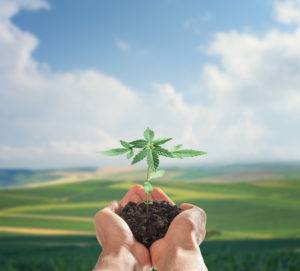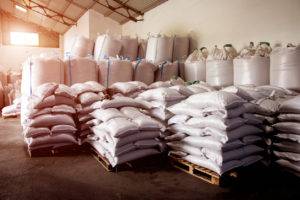
The US hemp industry – food, animal supplements, and biomass, as well as CBD – is still in its infancy. After all, this is only the fourth harvest season legalization under the 2018 Farm Bill. Hemp production is down. Many growers have left the business in frustration. On the flip side, CBD sales are still skyrocketing and the demand for that and CBG are expected to increase. A lot of what we are witnessing looks like the typical growing pains of a nascent industry. It is, of course, complicated by the THC factor which contributes greatly to the not-straightforward development of hemp’s incredible and undeniable potential. So where does that leave us … those of us who remain committed to hemp agriculture and all its tremendous possibilities to feed, cloth, and soothe the world’s population? Here are a few of the issues that are getting sorted out in the US.

Genetics
A couple of things are going on with genetics. The legalization of hemp opened a new door for seed growers such as me. Cheyenne Mountain Seed Company is a meticulous, highly disciplined, and stringent operation. We take pride in our superior genetics. Unfortunately, as often happens, there is also a much less orderly faction of producers who rushed in to make a fast buck. Their inferior, unreliable seed quality has sown discontent among the growing community. Quality seeds are more expensive. But you can depend on them. Sketchy seeds will deliver a sketchy yield. ROI, folks. Lots of you found this out the hard way. Be super picky about your seed source and thank yourself later.
The other part of the genetics story is that genetics are dynamic. New strains are always being developed and field tested. Every year, we have new data on what strains grow best in what conditions, both from universities and growers themselves. Here’s a current example: drought this year was very hard on Texas growers. They were hoping for a surefire crop that could stand up to dry conditions. For the most part, hemp is resistant to drought – unless, apparently, it is this extreme. Back to the drawing board. There will always be those of us who are looking to create sturdier, stronger, more resilient hemp seeds. As we progress in those efforts, hemp seeds of the future will have the ability to withstand all kinds of trying conditions that currently are debilitating to our crops. Over time, the overall quality and variety of seed is going to get better and better. We’re just beginning.

Processing
How many of us have eagerly brought in our fall harvest, only to find ourselves on a long wait list to get our crop processed? Or worse, watched a crop decay before our eyes because the drying facility was overbooked? I mean, we’re not making money when this stuff is just sitting in the barn waiting. It’s aggravating to pour so much time and treasure into these plants, only to have them sit in storage. And if you’ve ever had to resort to hauling your yield hundreds of miles to an out-of-state processing facility, you’ve probably questioned your own sanity for ever getting into this business. This factor alone has discouraged untold numbers of growers. But an immature supply chain is not a permanent or fatal flaw. Like I said, this seems like an ordinary challenge for a new industry … just another factor where we are waiting out an immature supply chain as it slowly builds. As industry stability grows, I feel certain investors will have more confidence in putting money into processing plants and that infrastructure will continue to get built out. In fact, it’s already happening.

Changing regulations
The rules we live by are subject to continuous tinkering by law and policy makers at the state and federal levels. This is good and bad. When they listen to grower feedback and adapt regulations to make operating conditions easier and less expensive, great! But that’s not always the case. And 2023 will likely see a new wave of adjustments. Some of the regulatory environment is just plain nonsensical. For example, why is hemp not OK for animals to eat but is approved for human consumption, including kids? Well, except active–duty military members. No hemp hearts for you guys. Sheesh. And don’t even get us started on testing and THC levels. For example, that new 2022 requirement for in-person field testing has added a costly new pain point. It’s not easy to predict when the rules are going to steady up. There are plenty of regulatory bodies in the mix and boy do they move slowly sometimes. Things will undoubtedly settle down one day and common sense will going to win, but “eventually” feels like a long time out, doesn’t it?

Public perception
Years into this and there is still widespread public confusion about the difference between hemp and marijuana. We’ve all had this conversation. “Ooooo … you grow hemp for living? What are you, some kind of hippie?” Did you just hear my eyes roll? Seeing CBD topicals stocked at the Walgreens and hemp flour on the grocery shelf are going a long way toward shattering some misconceptions. That trend is undoubtedly going to continue. The legalization of recreational marijuana is expanding and will, in the end, lead to legalization at the federal level. When that happens, we anticipate a rapid shift in acceptance of all forms of cannabis.

How To Hang In There
You’ll see opinions out there that say, “hemp is at a cross roads.” I don’t necessarily see it that way. I visualize this as a winding path that is generally going the right direction. Legalization was just a first step. Now, we’re sorting through the details. It’s not fun. It’s going to take some time. But it’s inevitable that hemp is going to have a big role in US agriculture, consumer products, and livestock production.
Meanwhile, how do we keep sane and positive in the midst all this turmoil and change? For those with a long-term vision of where this is ultimately going, there are some smart choices that are within your control that can help you weather the external chaos. Careful planning is one. Get your processing, labor, supplies, and equipment in place well ahead of time. Reducing risk exposure is another. Make sure your maintenance is all up to date, buy the best seed you can afford, and scale your operation to right-size your liability if things go haywire. Measures like this will keep you in the game as the environment improves. Meanwhile, enjoy the growing experience and have faith in better days ahead.


Recent Comments